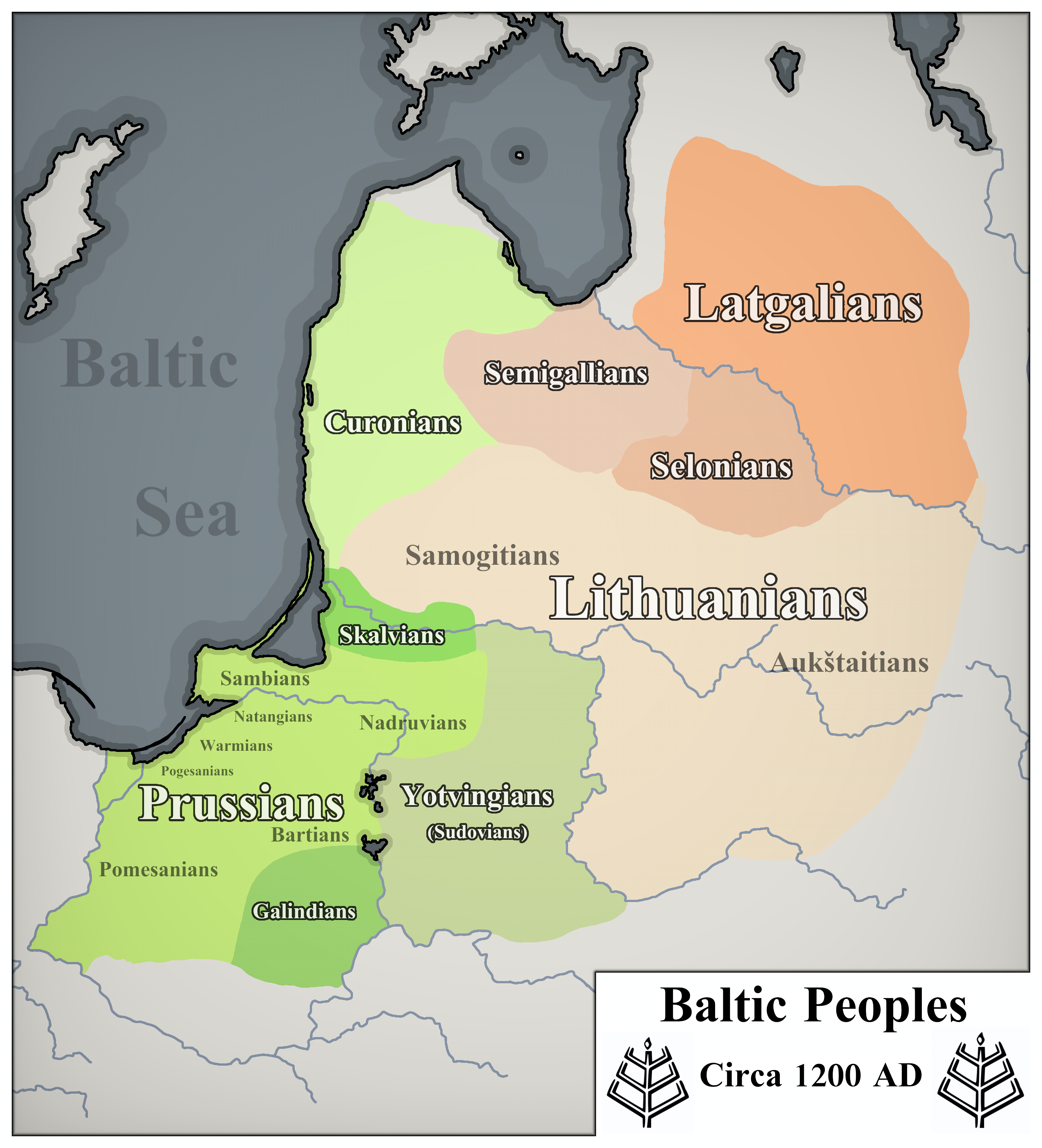Map of Baltic Peoples Circa 1200 AD


David Chen
Data Visualization Specialist
David Chen is an expert in transforming complex geographic datasets into compelling visual narratives. He combines his background in computer science ...
Geographic Analysis
What This Map Shows
The visualization titled 'Baltic Peoples Circa 1200 AD' intricately details the distribution of various ethnic groups inhabiting the Baltic region during the medieval period. This map provides a glimpse into the complex tapestry of cultures, languages, and tribes that thrived in this area, reflecting a time when the Baltic Sea was not only a natural boundary but also a crucial maritime route for trade and cultural exchange.
Transitioning from the map itself, it’s essential to delve into the actual topic it represents: the diverse peoples of the Baltic region in the 12th century. The map showcases tribes such as the Prussians, Lithuanians, Latvians, Estonians, and Finns, each with unique identities, languages, and ways of life, which contributed to the rich cultural heritage of northeastern Europe.
Deep Dive into the Baltic Peoples
The Baltic peoples, primarily consisting of the Balts, Finnic groups, and others, were characterized by their agrarian lifestyles, tribal governance, and a reliance on the natural resources available in their surroundings. The Balts, for instance, were divided into several tribes, including the Prussians, who inhabited the area that is now part of modern-day Poland and Kaliningrad. Interestingly, the Prussians were known for their pagan beliefs and warrior culture, which often brought them into conflict with neighboring tribes and incoming Christian forces from the west.
The Lithuanians, who were among the largest and most influential groups, began to consolidate their power during this period, eventually laying the groundwork for the Grand Duchy of Lithuania in the 13th century. Their society was marked by a blend of pagan traditions and a shift towards Christianity, influenced by the Teutonic Knights’ campaigns in the region. Ever wondered how these interactions shaped the religious landscape of the area? The imposition of Christianity led to significant cultural shifts, often erasing ancient beliefs and practices.
On the other hand, the Finnic peoples, such as the Estonians and Livonians, played a crucial role in maritime trade. They utilized the Baltic Sea for fishing, trade, and establishing connections with Scandinavian and German traders. The coastal settlements were vital hubs of economic activity, showcasing the importance of the sea in their daily lives.
The languages spoken by these groups also reflect their rich heritage. The Baltic languages, such as Lithuanian and Latvian, belong to the Indo-European family and are considered some of the oldest languages in Europe. They hold significant linguistic treasures, encapsulating the history and identity of the Baltic peoples.
Regional Analysis
When breaking down the map by regions, we see distinct variations in culture and lifestyle. In the western Baltic area, the Prussians and the Livonians were in constant interaction with the Germanic tribes, leading to a blend of customs and trade practices. Conversely, the eastern Baltic region, primarily inhabited by Lithuanians and Latvians, had a more unified cultural identity, largely due to their geographical proximity and shared linguistic roots.
For example, the coastal regions of Estonia were marked by a mixture of Finnish influence and local customs, whereas the inland areas exhibited more traditional Baltic characteristics. Interestingly, as the map illustrates, the distribution of these groups was not static; it evolved through migration, trade, and conflict, shaping the current ethnic landscape of the region.
Significance and Impact
The study of the Baltic peoples circa 1200 AD holds significant importance in understanding the historical and cultural evolution of northeastern Europe. It provides insights into how ancient conflicts, trade routes, and cultural exchanges shaped the identities of modern nations such as Lithuania, Latvia, and Estonia.
Moreover, the interactions depicted in this map foreshadowed future geopolitical dynamics in the region, especially as the Baltic Sea became a contested space during the Middle Ages and beyond. Understanding these early dynamics can help us appreciate current trends in nationalism and regional identity that still resonate today. Additionally, as we reflect on the historical narratives, it’s crucial to recognize the ongoing impact of these early societies on contemporary Baltic culture, language, and politics. As globalization continues to shape our world, exploring these historical roots can provide valuable lessons on cultural resilience and adaptation.
In conclusion, the 'Baltic Peoples Circa 1200 AD' map serves as not just a historical reference but a reminder of the complex interplay between culture, geography, and identity that continues to influence the Baltic region today.
Visualization Details
- Published
- October 10, 2025
- Views
- 40
Comments
Loading comments...